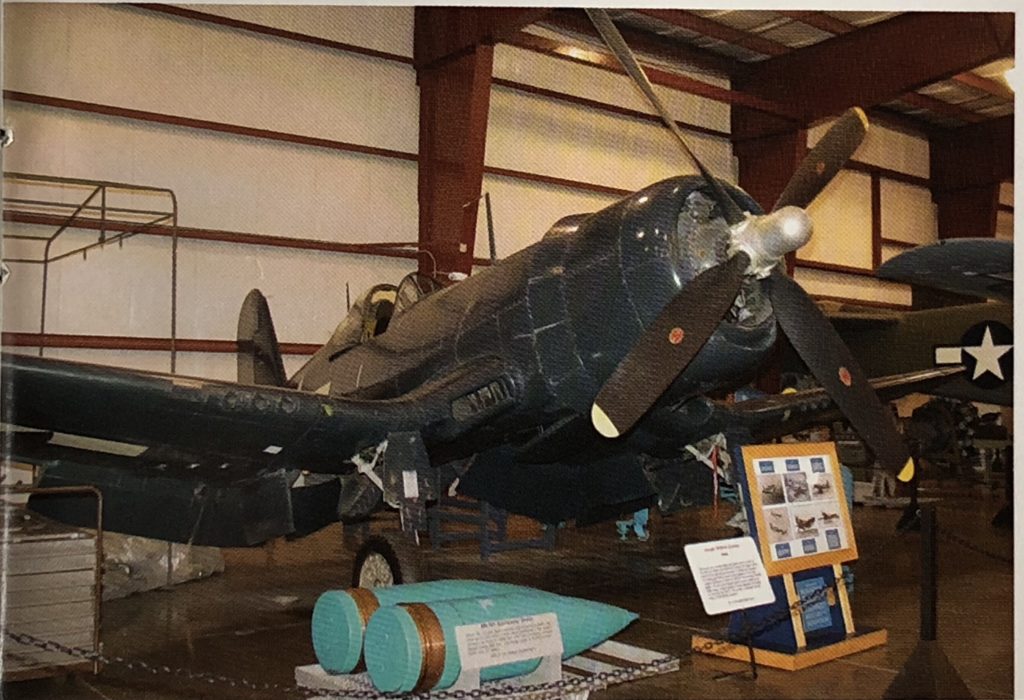By Jack Connors
(c) Connecticut Explored Inc. 2003 Nov/Dec/Jan 2004
Subscribe/Buy the Issue!
Connecticut has always been known for its innovations, including one of the highest performance fighter aircraft of World War II. In 1923 Rex Beisel was a young designer of high-speed aircraft at the navy’s Bureau of Aeronautics. Fifteen years later as Chief Engineer at Chance Vought Aircraft he designed the fastest navy fighter, the Vought Corsair. His engine men were Leonard Hobbs, Perry Pratt, and Andrew Willgoos of Pratt & Whitney Aircraft, creators of the world’s most powerful air-cooled, radial engine—the 2,000 horsepower R-2800.
In 1938 the navy was looking for a new high-performance, carrier-based fighter aircraft. The Chance Vought Division of United Aircraft proposed a unique airplane to the navy. It was essentially a shrink-wrapped fuselage around P&W’s R-2800. The unique feature was the inverted gull wing, which cleverly solved two problems. The first technical challenge was to lift the fuselage up higher from the ground without a huge weight increase in the landing gear because 2,000 horsepower required a propeller of over 13 feet in diameter. The second technical challenge was to minimize the aircraft drag. The solution: the landing gear was attached at the bend in the wing providing the proper ground clearance and the wing roots intersected the fuselage at a 90-degree angle—creating the inverted gull wing configuration.
The navy contracted with Vought for a prototype. Its first flight was in May 1940. United Aircraft Chairman, Frederick Rentschler recalled the event:
Admiral Towers, who was then head of the Bureau of Aeronautics, came to Hartford, together with a number of representatives of the press, to witness a demonstration of a new navy fighter…. During the course of its flight demonstration, it was put over the speed course and actually showed about 405 miles per hour at its optimum fighting altitude. Immediately thereafter in my office Admiral Towers, in addressing the press, simply told them that they had witnessed a demonstration of the fastest and most powerful fighter in the world at that time.
The Corsair had cooling air drawn into the engine through an opening in the leading edge of both wings close to the fuselage. At high speed the incoming air made an unmistakable whistling sound, which the Japanese aptly named “Whistling Death.” Indeed it was! The Corsair, with its six 50-caliber machine guns and two 1,000-pound bombs, was not the bearer of good tidings to the enemy! Its maximum speed was 465 miles per hour with the R-2800-32W engine, and its range was about 1,100 miles. Corsairs in the Pacific from April 1944 to the end of the war shot down more than 2,100 enemy aircraft.
More than 11,000 Corsairs were built during World War II, and it was used by the navy and marines during the Korean War. The French and British also used the Corsair. The former in Indochina and Algeria, the latter in the Suez area. The United States retired the Corsair in 1955, however it was later used by Argentina, Honduras, and El Salvador.
The New England Air Museum has a Corsair on display in the Military Hangar. The aircraft weighs about 14,000 pounds with a wingspan of 41 feet. For more information on visiting the New England Air Museum, call 623-3305 or visit www.neam.org.
Jack Connors, a volunteer and engine curator at the New England Air Museum, is a retired vice president of Pratt & Whitney.
Sources
Alfred I. Sibila, “Designing the Brent-Wing Bird,” Naval History – January/February 1995, United States Naval Institute.
Frederick B. Rentschler, “An Account of Pratt & Whitney Aircraft Company,” 1925-1950, P & W Archives.
Explore!
Read more stories from the 2003 Nov/Dec/Jan 2004 issue
Read more stories about Connecticut in World War II in our special 75th anniversary issue, Fall 2020
Read more stories about Connecticut at War on our TOPICS page.
Read more stories about Connecticut made and invented products, including more stories about Pratt & Whitney, on our TOPICS page.

